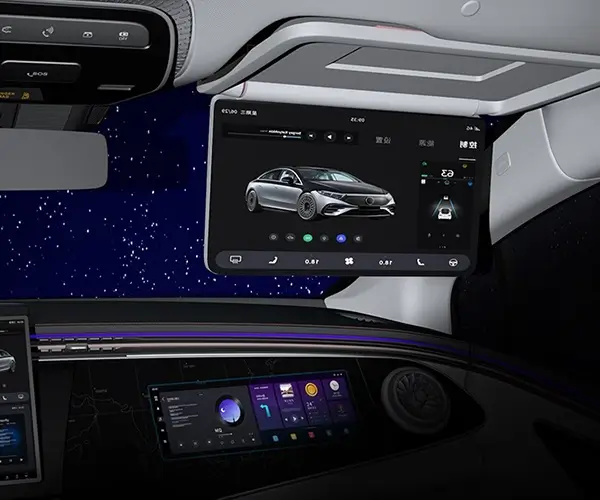part 1:
When we think about movement—whether it’s a robotic arm executing precise tasks, an automobile cruising down the highway, or a conveyor belt moving products efficiently—there’s a hidden symphony of mechanical components working behind the scenes. Among the most pivotal parts of this symphony are drive sprockets, gears, and motors. These elements form an interconnected system that converts energy into motion, delivering impressive power and precision across countless industries.

The Foundation of Mechanical Power: Motors
At the very heart of most mechanical systems lies the motor. Think of a motor as a project's beating heart—its role is to generate the mechanical energy needed to run the entire operation. Electric motors dominate the scene because of their efficiency, scalability, and ease of control. From tiny servo motors in robotics to massive industrial motors in manufacturing plants, their core function remains consistent: convert electrical energy into rotational mechanical energy.
Motors are incredibly versatile. In robotics, they enable intricate movements, allowing robotic arms to rotate with pinpoint accuracy. In automotive applications, electric motors backup traditional engine systems or power electric vehicles entirely. Meanwhile, in industrial environments, large motors drive conveyor systems, pumps, and heavy machinery.
One major advantage of electric motors is their ability to be precisely controlled with variable frequency drives (VFDs), allowing seamless speed adjustments and smooth start-stop operations. This control is especially essential when paired with gears, sprockets, and other transmission components.
Understanding the Role of Drive Sprockets
Drive sprockets act as the strategic intermediaries between motors and the moving parts they power. While they may look simple—a wheel with teeth—they perform a crucial function in transferring rotational force, especially in chain-driven systems.
Imagine a bicycle’s chain passively transferring motion from pedals to the wheel; similarly, drive sprockets engage with chains or belts to translate motor torque to conveyor belts, bicycles, motorcycles, or industrial machinery. Their teeth grip the chain securely, ensuring consistent transmission of power even under demanding loads.
What makes sprockets particularly fascinating is their adaptability. They come in various sizes and tooth configurations tailored for specific applications—longer sprockets with more teeth for gradual torque transfer, smaller sprockets for speed enhancement, and specialty sprockets designed to endure harsh environments or transmit high forces.
Chain-driven systems leverage the advantages of sprockets: they can transmit power over distances without slipping, handle high-torque loads, and maintain synchronization between multiple moving parts. This makes sprockets an essential component in everything from motorcycle transmissions to large-scale industrial conveyor systems.
Gears: The Heart of Mechanical Precision
While sprockets excel at transmitting power over distances, gears are often employed for precision and control in gear reduction, direction change, or synchronization. Gears are toothed mechanical components that interlock to transfer torque and rotational motion.
Gears come in various shapes and functions: spur gears for simple power transmission between parallel shafts, bevel gears for changing the rotational direction between perpendicular shafts, planetary gears for compact gearboxes, and worm gears for high reduction ratios and locking mechanisms.
One of the intrinsic qualities of gears is their ability to modify rotational speed and torque ratios in predictable ways. When a smaller gear meshes with a larger gear, the output shaft rotates slower but with more torque—the concept of gear reduction. Conversely, a small gear driving a larger gear speeds up the movement but with less torque. This flexibility allows engineers to design machinery tailored to specific needs—whether it’s accelerating a robotic arm or increasing the torque capacity of a crane.
Gearboxes, combining multiple gears, manipulate motion to optimize performance. They also serve to protect delicate components from overloads and ensure smooth operation. For instance, in an automatic transmission, a complex gear system provides a seamless shift between different speed ranges, making driving comfortable and efficient.
The Dance of Components: System Interplay
The true beauty of drive systems emerges when these components work in harmonious concert. Consider a conveyor belt system in a warehouse: a motor powers a drive sprocket connected to chain links, which in turn move the conveyor. Gears may be involved within the motor assembly to fine-tune speed or torque, ensuring the conveyor runs precisely at the desired pace.
In robotics, motors turn gears to decrease or increase speed and torque—precise movements enabling delicate assembly lines. The sprockets and chains provide elongated drive paths, while gearboxes refine motion characteristics, resulting in fluid, controlled, and reliable operations.
The choice of materials also plays a pivotal role. High-strength steel teeth resist wear and fatigue in sprockets and gears. Lubrication reduces friction and extends service life, while advanced manufacturing techniques—like CNC machining and additive manufacturing—permit intricate designs for optimized performance.
Emerging Trends and Innovations
The evolution of drive sprockets, gears, and motors reflects ongoing innovation—aimed at improving efficiency, durability, and adaptability. Variable ratio systems allow dynamic adjustments in gear mechanisms, improving energy consumption and operational flexibility.
Lightweight, high-strength composites and advanced lubricants reduce system weight and maintenance intervals. Smart sensors integrated into gearboxes and sprockets provide real-time condition monitoring, predicting failures before they occur and minimizing costly downtime.
Electrification trends push for highly efficient, compact electric motors with integrated gearboxes—riding the wave of electric vehicles and automated manufacturing. Moreover, the adoption of additive manufacturing enables complex, customized gear and sprocket designs that optimize load distribution and minimize material use.
Closing Thoughts
Drive sprockets, gears, and motors are more than just mechanical parts—they are the silent architects of motion in countless devices and industries. Their design and interplay require a blend of art and science, balancing strength, precision, and efficiency. As innovations continue to push the boundaries of mechanical power transmission, these components will remain fundamental to engineering progress, powering everything from the simplest conveyor to complex robotic systems orchestrating the future.
Established in 2005, Kpower has been dedicated to a professional compact motion unit manufacturer, headquartered in Dongguan, Guangdong Province, China.




































